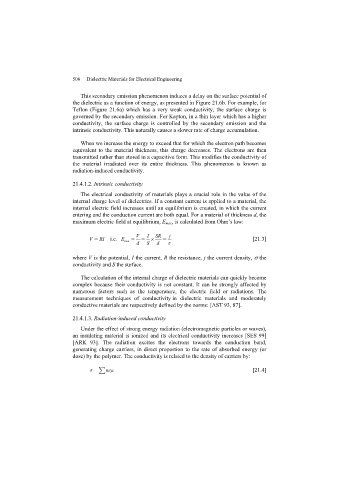Page 508 - Discrete Mathematics and Its Applications
P. 508
7.4 Expected Value and Variance 487
EXAMPLE 13 Let X and Y be random variables that count the number of heads and the number of tails when
a coin is flipped twice. Because p(X = 2) = 1/4, p(X = 1) = 1/2, and p(X = 0) = 1/4, by
Theorem 1 we have
1 1 1
E(X) = 2 · + 1 · + 0 · = 1.
4 2 4
A similar computation shows that E(Y) = 1. We note that XY = 0 when either two heads and
no tails or two tails and no heads come up and that XY = 1 when one head and one tail come
up. Hence,
1 1 1
E(XY) = 1 · + 0 · = .
2 2 2
It follows that
E(XY) = E(X)E(Y).
This does not contradict Theorem 5 because X and Y are not independent, as the reader should
verify (see Exercise 16). ▲
Variance
The expected value of a random variable tells us its average value, but nothing about how
widely its values are distributed. For example, if X and Y are the random variables on the set
S ={1, 2, 3, 4, 5, 6}, with X(s) = 0 for all s ∈ S and Y(s) =−1if s ∈{1, 2, 3} and Y(s) = 1
if s ∈{4, 5, 6}, then the expected values of X and Y are both zero. However, the random
variable X never varies from 0, while the random variable Y always differs from 0 by 1. The
variance of a random variable helps us characterize how widely a random variable is distributed.
In particular, it provides a measure of how widely X is distributed about its expected value.
DEFINITION 4 Let X be a random variable on a sample space S. The variance of X, denoted by V(X),is
2
V(X) = (X(s) − E(X)) p(s).
s∈S
That is, V(X) is the weighted average of the square of the deviation of X. The standard
√
deviation of X, denoted σ(X), is defined to be V(X).
Theorem 6 provides a useful simple expression for the variance of a random variable.
2
2
THEOREM 6 If X is a random variable on a sample space S, then V(X) = E(X ) − E(X) .
Proof: Note that
2
V(X) = (X(s) − E(X)) p(s)
s∈S
2
= X(s) p(s) − 2E(X) X(s)p(s) + E(X) 2 p(s)
s∈S s∈S s∈S
2
= E(X ) − 2E(X)E(X) + E(X) 2
2
2
= E(X ) − E(X) .
We have used the fact that s∈S p(s) = 1 in the next-to-last step.

